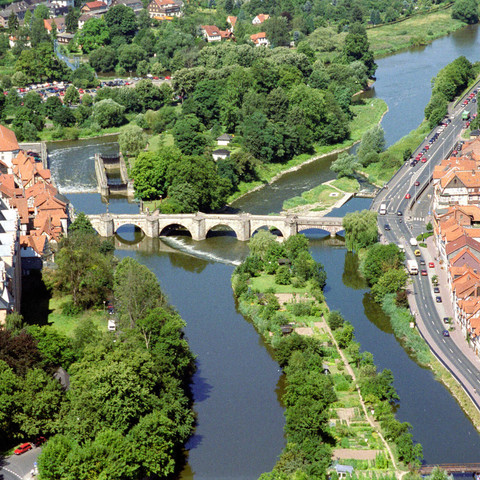The historic Werra Bridge is one of the oldest surviving stone bridges in northern Germany.
The six arches of the bridge are supported by five piers with acute-angled icebreakers on the southeast side. The 105-metre-long bridge not only connected the old town with the historic suburb of Blume. Rather, it was an important bottleneck on the long-distance trade route coming from Frankfurt am Main, which led from the Hessian depression via Kassel and the Leine valley to Braunschweig and on to northern Germany.
The bridge was roofed over around 1400. There is documentary evidence of a bridge toll from this time, which was collected until the middle of the 19th century and provided the town with important income. The drawbridge, which can be seen in historical views, the small defence towers, iron portcullis and the customs house bear witness to Münden's important function as a trade and transport hub.
In the course of the extension of the Chaussee from Hanover to Kassel, the canopies were removed as early as 1777/79 so that larger carts could also pass the bridge. The structure was repeatedly damaged by floods, ice and other environmental influences and was last completely renovated in 1986.


